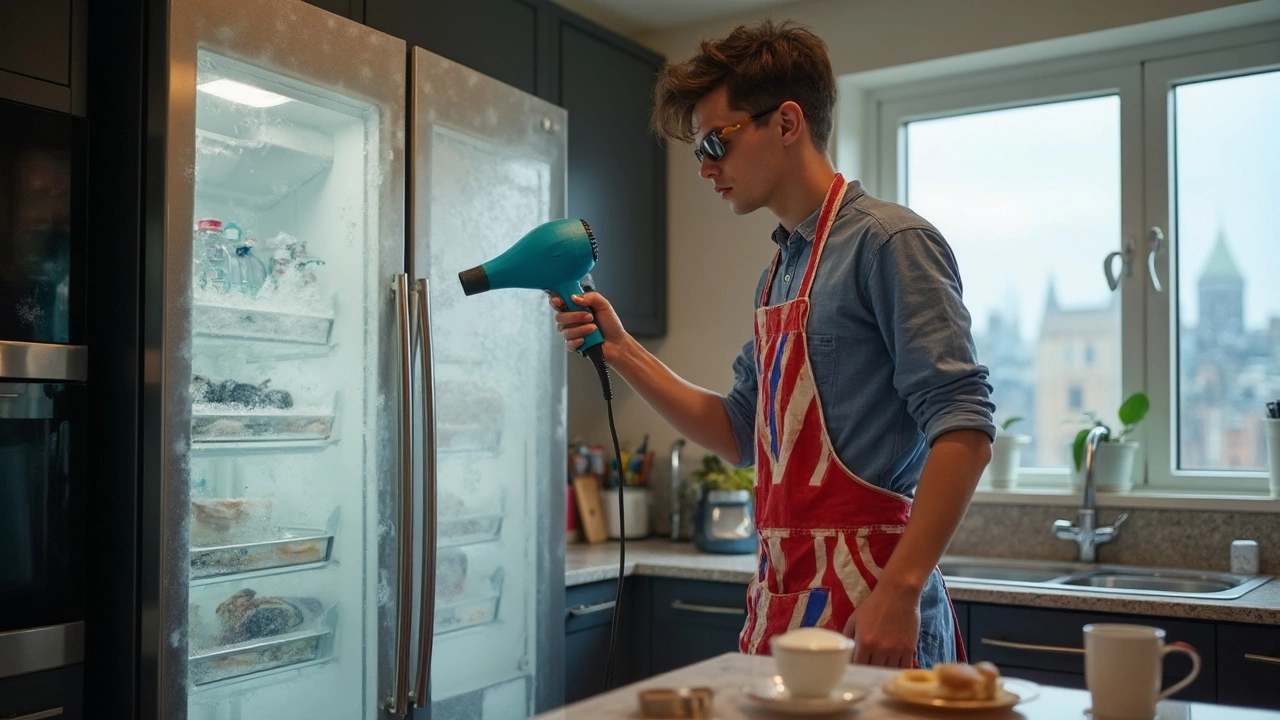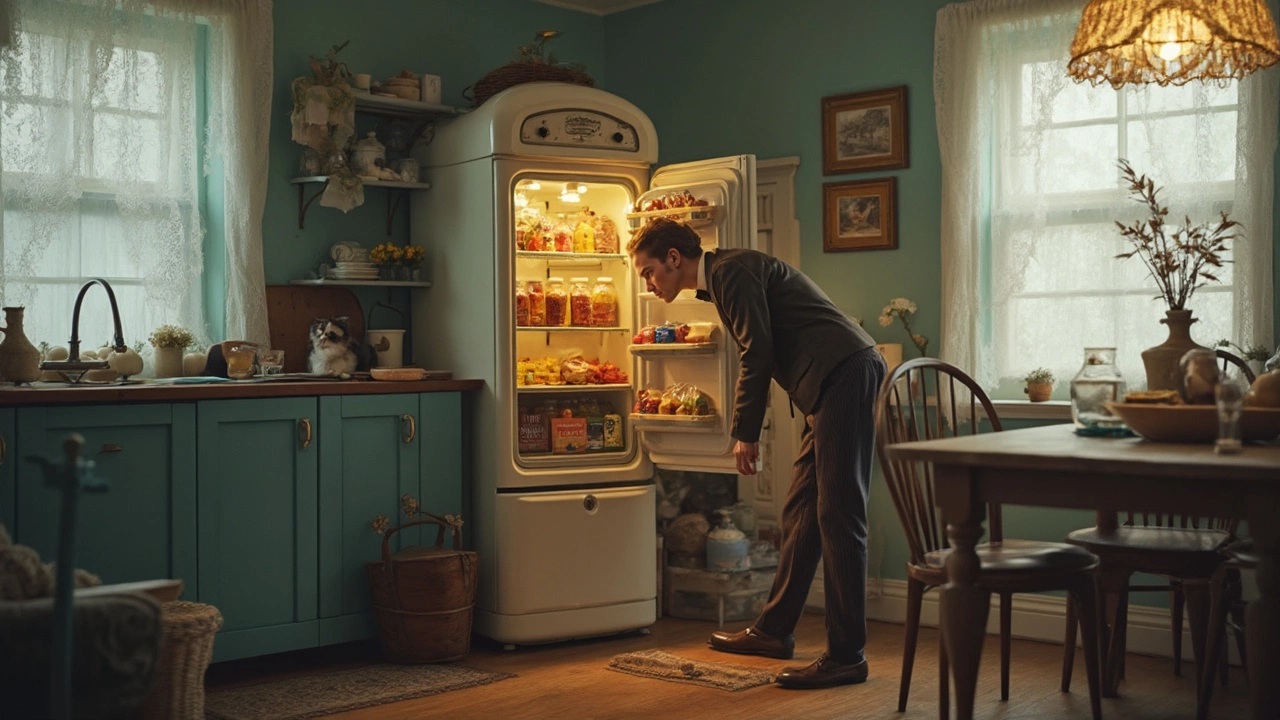So, your freezer isn't freezing, and you're about to lose your cool. Literally. Before you start shopping for a new one or calling in the pros, let’s troubleshoot a few common culprits.
First off, check the thermostat. Yeah, it sounds basic, but sometimes the problem is simpler than you think. Toys, ice buildup, or a misdirected elbow could have just nudged it out of the ideal temp range. Make sure it's set to the manufacturer's recommended temperature, usually around 0°F (-18°C).
Next up, ventilation. Your freezer needs room to breathe, kind of like us after a big meal. Move it away from the wall a bit and make sure vents aren’t blocked. Those vents are no joke—they circulate air to keep everything chilled.
If it's still struggling, peek at the seals. Those rubbery door gaskets have got to be airtight. If they’re loose, cracked, or dirty, cold air’s escaping faster than you can say 'defrost'. Try cleaning them first, and if they are worn out, replacement might be needed.
- Understanding Common Freezer Issues
- Checking the Thermostat
- Ensuring Proper Ventilation
- Maintaining Seals and Gaskets
- Defrosting for Efficiency
- When to Call a Professional
Understanding Common Freezer Issues
Having a freezer that won't stay frozen can be a real headache, and there are several reasons this might happen. Let's break down some usual suspects that could be making your freezer act up.
1. Thermostat Troubles
The thermostat is like the brain of your freezer's temperature control system. If it's set too high or faulty, your freezer isn't going to hit that chilly mark. Make sure it's adjusted correctly—around the 0°F (-18°C) sweet spot.
2. Blocked Vents and Airflow
Your freezer relies on good airflow to maintain an even temperature. If the vents are obstructed by packages or frost, cold air can't circulate properly. Keep those vents clear!
3. Faulty Door Seals
When the door seals or gaskets are worn or damaged, they're an open invitation for warm air to sneak in and spoil your frozen goods. Regularly check them for wear and cracks and replace if needed.
4. Frost Buildup
Too much frost can mean your freezer is overworking to keep things cool. Regular defrosting helps prevent this and can improve efficiency. A dusty condenser coil can also be a sneaky culprit; cleaning it might help things run smoother.
5. Overloaded Freezer
Stuffing your freezer too full can restrict airflow, leading to uneven temperatures. It might be time for a little declutter—keeping it about 70-80% full is ideal.
Sometimes, the solutions are straightforward and can save you from unnecessary stress. Keep these points in mind, and your freezer will be back to running like it's brand new.
Checking the Thermostat
Alright, time to get hands-on with that freezer issue. One of the easiest and most overlooked aspects when dealing with a freezer not freezing is the thermostat. It's like the brain of your freezer, telling it how cold to get.
Start by opening your freezer and looking for the thermostat control. Typically, it’s a dial or digital display. If it’s a dial, ensure it’s set within the recommended range—usually around 0°F (-18°C). For digital controls, simply adjust accordingly.
Why Thermostat Settings Matter
The thermostat plays a crucial role in ensuring proper temperatures. A setting too warm? Your food might as well be on vacation in sunny Florida. Set too cold? You're risking overwork for the appliance, hiking up energy bills and shortening lifespan.
Steps to Check
- Locate the thermostat inside your freezer.
- If it’s a dial, use a thermometer placed in a glass of vegetable oil overnight for accurate reading. Check that it aligns with your dial setting.
- Adjust as needed, ensuring it’s in the optimal range.
- Observe for a few days to see if temperature stability improves.
Common Issues
- Thermostat dial accidentally turned during loading/unloading.
- Temperature sensor failing or not properly connected.
- Incorrect internal wiring or loose connections.
If a few adjustments don't solve your freezer issues, it might be time to consider a technician to test the thermostat with a multimeter—because sometimes it's more than just a nudge that’s needed.
Ensuring Proper Ventilation
Your freezer needs to breathe, much like your dog needs its daily walk. This might sound odd, but proper ventilation is crucial for keeping your freezer running smoothly. Without it, your trusted icebox might struggle to maintain the chill it’s supposed to.
Check the Placement
First things first, check where your freezer is sitting. It shouldn't be flushed against the wall. You’d be surprised how much this little adjustment can make a difference. There should be at least a few inches of space between the back of your freezer and the wall. This helps the compressor cool down and prevents overheating.
Inspect the Vents
A happy freezer is one with unblocked vents. Take a look at the back and underside. Dust and debris have a sneaky way of building up over time. Use a vacuum or a duster once in a while to keep those vents clean and clear. Plus, it’ll keep you sneezing less—a win for you too!
Consider the Surrounding Temperature
Where’s your freezer hanging out? If you’ve got it parked in the garage or basement, know that extreme temperatures can mess with its efficiency. If it’s sweltering outside, the poor thing works harder to stay cool. In a freezing space, it might not kick in at all. Try keeping your freezer in a consistent, moderate temperature environment where it thrives best.
Quick Stats
Did you know, up to 25% of freezers thought to be defective are simply misplaced or poorly ventilated? Investing just a bit of time to ensure proper ventilation often keeps your appliance maintenance straightforward and hassle-free.
Proper ventilation is like giving your freezer a breath of fresh air, quite literally. So make sure it’s got the space and conditions it needs to do its job right.

Maintaining Seals and Gaskets
Let’s talk about seals and gaskets—the unsung heroes keeping your freezer locked tight. If these guys are letting cold air slip away, your freezer's struggling to stay frozen becomes understandable. Odds are, you’ll notice your electricity bill sneaking upward, too.
First off, give them a good clean. Dirt and grime can stop seals from closing shut. Just mix a bit of baking soda with warm water, and wipe those seals down gently with a cloth. If that fixes the problem, you’re good to go.
Checking for Wear and Tear
Sometimes, though, cleaning's not enough, especially if they’re cracked or brittle. Here’s how you can check them. Grab a dollar bill, close it in the freezer door, and see if you can easily pull it out. If it slips out without much resistance, those gaskets aren’t pinching tight anymore.
Replacing Seals
Now, if replacing is in order, fear not! It’s easier than you think. Most freezer gaskets are slid into a groove or attached with screws. A little handy work and you’re done. Just make sure you buy the right type for your model.
Prevention is Key
A little maintenance goes a long way. Keep those seals clean and inspect them regularly. A door that's closing perfectly keeps your appliance running efficiently, saving you dough in the long haul. Not to mention it prevents food from thawing unexpectedly.
If you're unsure or everything else seems tricky, don't hesitate to reach out to a professional. Remember, these seals are vital in helping your freezer maintain the good fight against warm air invasion.
Defrosting for Efficiency
Over time, your freezer can build up a layer of frost that's thicker than your morning coffee. It might look like sparkling snow, but trust me, it's far from magical when it starts hogging your space and reducing your freezer's efficiency. Why? Well, that frost acts like an annoying insulator, making it harder for your appliance to stay icy cold.
Why does this happen? Freezers are supposed to be sealed tight, but when warm, moist air gets in, it turns into frost. Combine that with frequent door openings, and you’ve got a recipe for overtime frost creation.
Freezer not freezing like it should? You might need to bite the bullet and defrost. Here’s a straightforward way to do it:
- First, unplug the freezer. Safety first, folks!
- Take out all your food. Use an ice chest to keep stuff cool if you’re worried about it thawing.
- Let the door open and wait. It’s that simple. You can speed things up with bowls of hot water inside or gently blow warm air using a hair dryer.
- Wipe away melting ice with towels. Catch that water before it becomes a puddle party on your floor.
- Once it’s clear, plug it back in, wait for it to reach the right temp, and restock your goodies.
Doing this at least once a year is recommended to keep things running smoothly. If you’ve got a self-defrosting freezer, then congrats—you’re off the hook! Otherwise, keeping this task in your yearly cleaning list is smart. It reduces energy consumption and extends your freezer's lifespan.
Is Ice Build-Up Normal?
A little bit of frost is normal, but if you’re seeing ice chunks big enough to put in a drink, something's off. Poor seals or frequent door openings could be to blame. Check those out if you find yourself defrosting too often.
Remember, a frost-free freezer is a happy freezer. Keeping things defrosted doesn’t just save energy; it keeps your food stored in the best conditions.
When to Call a Professional
Sometimes, no matter how much you DIY or tweak, the freezer just won't cooperate. It's not something to lose sleep over. But it might be time to call in the experts. Here's when you should make that call.
Strange Noises That Won't Quit
If your freezer sounds like a marching band, it's more than just annoying. It could mean parts like the compressor or fan are having issues. A freezer repair expert will pinpoint the noise source without all the guesswork.
Consistent Temperature Fluctuations
Notice persistent changes in temperature despite setting adjustments? It might be a problem with the internal thermostat or even a faulty compressor. Both require a pro who knows their way around these complex components.
Leaks or Excessive Frost
Water pooling around the base or finding flaky ice everywhere? These are signs of potentially serious issues like a broken defrost heater or issues in the sealing system. Skilled technicians can address these issues effectively.
| Common Issues | Impact |
|---|---|
| Thermostat Issues | Inconsistent freezing |
| Seal Problems | Energy waste and temperature loss |
| Compressor Faults | Loud noises, inefficiency |
Electrical or Circuit Concerns
If the freezer is tripping your circuit breaker or if you notice flickering lights when it cycles on, it's time for a professional. Handling electrical issues without knowledge can be risky and should be left to a certified technician.
Sure, taking care of your appliance maintenance can be rewarding, but sometimes the best solution is to let someone with the right skills handle it. It saves time, frustration, and keeps your freezer in great shape.

I am an expert in the services industry with a focus on appliance repair. My passion lies in understanding how things work and educating others in simple, engaging ways. This enthusiasm fuels my writing, where I delve into topics around appliance maintenance and troubleshooting. I aim to make these subjects clear and accessible to all readers.